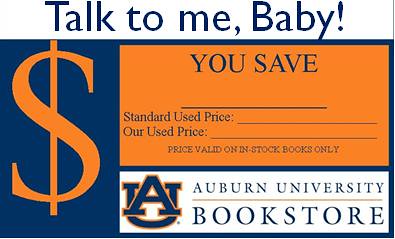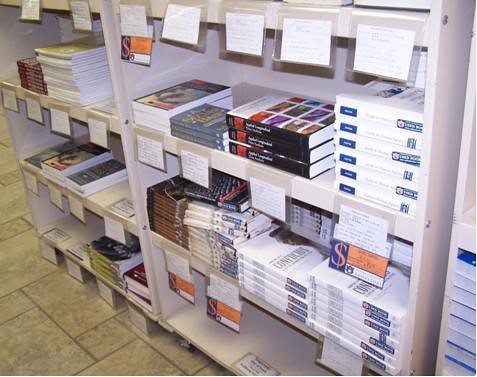By definition, being proactive means creating or controlling a situation by causing something to happen, rather than responding to it after the fact. And in today’s collegiate retail industry, it’s becoming a word synonymous with success.
In order to meet the ever-changing needs of students, the most innovative stores are staying competitive by embracing this mindset with the development of new practices. Understanding the importance of a proactive philosophy, Rusty Weldon, MBS wholesale customer and assistant director of Auburn University Bookstore, along with his staff, did just that, by restructuring their pricing methodology.
The evolution of the online marketplace, with textbook pricing determined by students, had placed significant pressure on the store’s old pricing models. With textbook prices continuing to rise yearly, the store’s leadership realized that they could no longer operate within the traditional industry pricing standards while still maintaining their responsibility to Auburn students.
In the fall of 2009, the store decided to break from tradition by changing the pricing model on some of their custom titles.
“We found out pretty quickly that this was a strategy that made us really competitive,” Weldon explained. “Soon, we started looking for ways to incorporate it across the board.
Expanding on their new approach, they began their first rollout of the program in January 2010. In order to break the used book pricing model, the store bought back used books from students at market-competitive prices.
“We looked at some of our major competitors, including Amazon, to help determine each title’s fair market value, and changed our margins accordingly,” he added.
As a book was used longer on campus, the buyback price was slowly adjusted each semester to account for the age of the book. This prevented students from buying a book at an inflated price toward the end of its use.
This aggressive approach provided the AU Bookstore customers with significant savings on their textbooks.
“First and foremost, this was a reinvestment in our students,” said Weldon. “It’s great if we see extra savings or even traffic. But, we took such a big risk because we wanted to show them that they can count on us, and that we genuinely have their best interests in mind.”
Like any new strategy, Auburn University Bookstore’s updated pricing methodology required some extra effort. Contributing considerable amounts of time, the leaders of the store worked to discover how to best execute the program.
To help spread the word about their enhanced value to students and faculty, the store created eye-catching shelf-tags featuring a large dollar sign and their school colors. Based on the concept of price comparison, these tags list a textbook’s title, the store’s price, as well as the national price average. Laminated and placed along each shelf, they help to focus students’ attention on the store’s pricing.
The combination of a new structure and their promotion through shelf-tags created an overwhelming student response. The store found the added value created a sense of urgency and had students rushing to be the first in line to claim their cost-effective used titles. In fact, staff members were removing 12-15 of the tags each morning during the first week of rush because they had already sold out of that book!
“It was a very positive reaction! We had students asking when they could start buying next semester’s books, before this semester’s finals had even finished,” added Weldon. “We also saw significantly less students renting titles because they could buy the used books cheaper, and still receive part of that money back during buyback.”
Saving students over $132,000 in the 2010 spring semester alone, Auburn University Bookstore’s forward-thinking mentality has certainly paid off.
“The textbook world can seem like a pretty scary place for a lot of us in the industry right now, so it’s really fun to see our hard work return this way,” he said. “It completely reinvented our business. We were able to turn heads and change traffic patterns which made students see us as the destination for textbooks.”
Accordingly, the store has experienced positive unit gains every term since the update, making the program a resounding success! Even better, used units sold were up 10% from last year, accounting for 3,000 additional used books sold.
“Students are saving so much on used titles that they’re able to afford to buy more books, so we’ve been able to move more new units, as well,” he added.
To those considering updating their pricing model, Weldon suggests starting small and slow.
“Do your homework, carefully consider how you lower your prices, and take the time to work out all the kinks, because if you do too much at once you can really break your back,” he explained. “But most importantly, talk with your students and find out what value means to them, because that’s your ultimate goal.”
To learn more about how an updated pricing structure could benefit your store, talk with your MBS Systems Representative.



